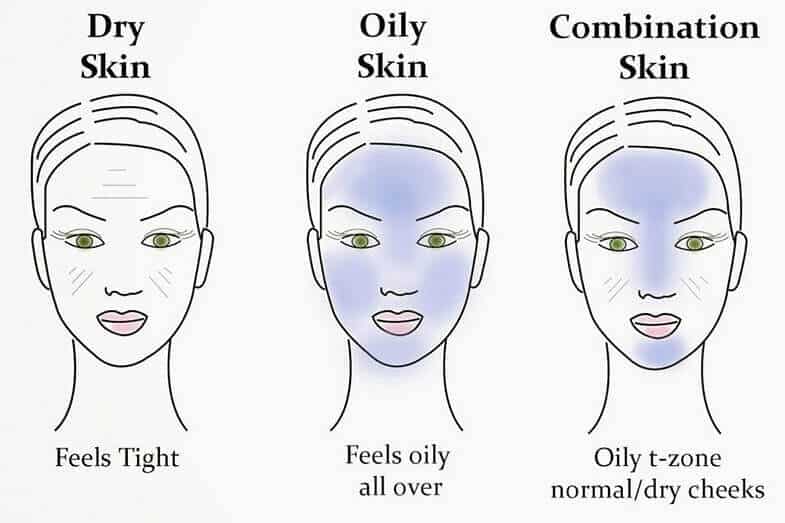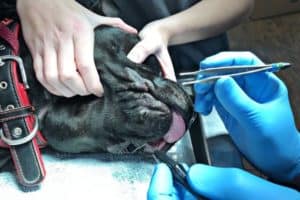Nothing beats having some time for yourself after a long and stressful day out in the world. And this time for yourself should include properly cleansing your face. But have you ever wondered if your cleanser is really working for you? How to know if your facial cleanser is not working?
Your facial cleanser is not working if, after using it, your skin feels like the following:
- Too oily or too dry – a change in your skin type
- Irritated or itchy – possible allergic reaction to the ingredients
- Too tight – strips your skin of moisture leaving it bare
- Unwashed – not fully clean after
A cleanser should not only rid our face of dirt build-up, sweat, oil, and makeup but also allow for your skin (and soul) to breathe again and feel renewed.
Most women I know even find it therapeutic! That’s the beauty in cleansing – it’s simple, fast, and gives you the results you need in an instant. You get to feel your skin being stripped off of harmful elements as soon as you lather on your choice of facial cleanser.
Our skin needs to look and feel not just clean but also plump, nourished, and not too oily or too dry. But if your skin feels any one of the above red flags, then that’s a sure sign your facial cleanser is not working for you anymore.
Read on to learn more about how to know if your facial cleanser is not working and how to properly cleanse and wash your face!
How to Know If Your Facial Cleanser Is Not Working?
Your facial cleanser is definitely not working if your skin is experiencing any of these warning signs:
- Too oily or too dry – if you feel that your skin’s texture is changing from your usual type, then it is a sign that your facial cleanser is not working.
- Irritated or itchy – this could be the start of an allergic reaction to certain ingredients in your facial cleanser. If irritation persists, it’s best to check with your dermatologist on the exact cause of your allergies.
- Too tight – your facial cleanser must be able to strip of impurities without drying the skin. If your skin feels too tight after a wash, then it could be a sign that the cleanser is not working well on you.
- Unwashed – this is probably the worst red flag. Facial cleansers must be able to clean your face and not add to its dirt build-up. If your skin feels heavier or is weighed down after a wash, maybe it’s time to switch up your facial cleanser for a better one.
We need to be a bit scientific to know for sure why a facial cleanser isn’t working. To do that, we need to look at the different skin types and how to know which one we really have. Then, we need to differentiate the types of facial cleansers available in the market. Lastly, we need to discuss the steps to cleansing correctly.
The Right Cleanser for Your Skin Type

To know if you’re using the right cleanser, consider what your skin type is.
Normal Skin Type – refers to well-balanced skin which is not too oily and not too dry. It has lesser to no imperfections, barely visible pores, the complexion is radiant, and no signs of severe sensitivity. Younger people tend to have a more normal skin type than older people.
Combination Skin Type – as the name suggests, is when the skin has areas that are dry or normal and some parts oily. These different textures in the same surface area require different skincare routines or a combination of different products to be able to address concerns of specific areas. People who have this skin type tend to have shiny skin prone to blackheads and pores that look larger than normal.
Dry Skin Type – People with dry skin tend to have dull, rough complexions, red patches, and more visible fine lines. It may also look rough and scaly, feel less elastic, and irritated most of the time. This skin type is more prone to peeling, becoming itchy and inflamed, and may be aggravated by factors such as genes, aging, hormonal changes, UV exposure, and harsh cosmetics.
Oily Skin Type – Aside from an excess amount of oil present in the skin surface, people with this type are also prone to enlarged pores, blackheads and pimples, more blemishes, and a thick and shiny complexion. The level of oiliness depends on the weather at a particular time of the year. Stress, hormonal imbalances, and too much humidity can affect the skin’s oiliness.
Sensitive Skin Type – this usually starts as one of the other skin types but may be triggered by particular skincare products. Symptoms include redness, itching, dryness, and a burning sensation.
The below video gives a great tip on knowing your own skin type. Once you know your skin type, you’ll know what facial cleanser is best for it.
Types of Facial Cleansers
To ensure your facial cleanser works for you, you have to use the right cleanser for your skin type. So, how to know if your facial cleanser is not working if you don’t know the myriad of facial cleansers on the market? Well, let’s run through each one:
Gel Cleanser – Clear, gel-like consistency designed for deep cleansing to decongest pores, kill acne-causing bacteria, and removing excess oil. Gel cleansers contain exfoliating as well as antiseptic ingredients, which are perfect for oily, acne-prone skin or combination skin types.
Cream Cleanser – Ideal for dry and sensitive skin, cream cleansers typically have a thicker consistency than most other cleansers. Having a very creamy texture, it cleanses the skin gently without stripping natural oils.
Foam Cleanser – Usually starting out as a gel or cream in the bottle, it spouts into a lush and foamy lather that’s lightweight and easy on the skin. Excess oil is effectively removed by foam cleansers.
Oil Cleanser – Gently removes dirt that clogs pores without drying the skin. This is recommended for people who regularly use waterproof makeup.
Clay Cleanser – Preferred for its absorbing properties, it rids the skin of excess oils and removes toxins from pores. This is ideal for oily and combination skin types.
Micellar Cleanser – This original formulation from France is all the rage right now. It features “micelles,” or the tiny oil particles suspended in soft water, which attracts dirt, oil, and makeup. Perfect for dry and sensitive skin and does not need rinsing off.
Powder Cleanser – It features a powdery soft texture when dry, which transforms into a creamy, gentle exfoliator upon contact with water. Ideal even for daily cleansing of oily and sensitive skin as it’s not too harsh like beads and scrubs.
Bar Cleanser – The green alternative to liquid cleansers, bar cleansers are making a comeback with a new formulation that contains very little to no soap content. It offers more skin-friendly pH levels and highly moisturizing ingredients such as different essential oils and glycerine. No need to throw out any plastic packaging as bar cleansers often come in paper or cardboard boxes that are easier to recycle.
Organic Cleansers (cloths, sponges, and mitts) – Recommended for oily and combination skin, these organic cleansers are specially made with plant fibers that do not require the addition of traditional cleansers to thoroughly clean the skin and remove impurities. Some examples are kessa mitts, muslin cloths, and konjac sponges.
It gets quite confusing when you think about all the available facial cleanser options which are also compatible with different skin types. That is why knowing your skin type is crucial to make it easy to narrow down your choices for the right facial cleanser.
For a list of our recommended facial cleansers that work with different skin types, see our full list of Best Cleansers.
See the below video for the best and worst oil cleansers:
How to Properly Cleanse and Wash Your Face
Here are the simple steps to correctly wash your face:
- Use lukewarm water and the correct facial cleanser for your skin type and skin concerns. Pat dry with a clean towel. Never rub your skin dry as it can stretch and lead to wrinkles.
- Take a cotton ball soaked in toner and gently swipe on your face, especially on problem areas (e.g. oily T-zone).
- Use one to two pumps of your favorite serum for your entire face. Let dry.
- Moisturize. You can also combine your serum with your moisturizer, saving you some time by skipping another step.
- Apply eye cream to moisturize your under-eyes as these are the thinnest part of your skin.
Easy right? But it does take some discipline and patience to be able to maintain the right way of cleansing your face. Being aware of the right kind of facial cleanser for your skin type can help minimize the likelihood of it not working on your skin.
See the below video on tips for properly washing your face – for all skin types:
Conclusion – How to Know If Your Facial Cleanser Is Not Working?
So to recap, how to know if your facial cleanser is not working? It is fairly easy to know if your facial cleanser is not working. You just have to know your skin – observe it, feel it, and know exactly what your skin issues are.
If you feel any of the following symptoms, then you can be sure that your cleanser is not working properly, and you should get a different cleanser:
- Too oily or too dry – a change in your skin type
- Irritated or itchy – possible allergic reaction to the ingredients
- Too tight – strips your skin of moisture leaving it bare
- Unwashed – not fully clean after
Once you find the right cleanser that works for your skin, you can be more at peace knowing the hunt is over! You can then stick with that cleanser for as long as it feels great on your skin.
Before leaving, here are a few more tips to having a better facial cleansing experience:
- Wash your hands before washing your face
- Use clean water with the right temperature
- Massage your skin while lathering on your facial cleanser
- Wash thoroughly to avoid residue on your skin
- Do not use towels with harsh fibers for patting your skin dry



